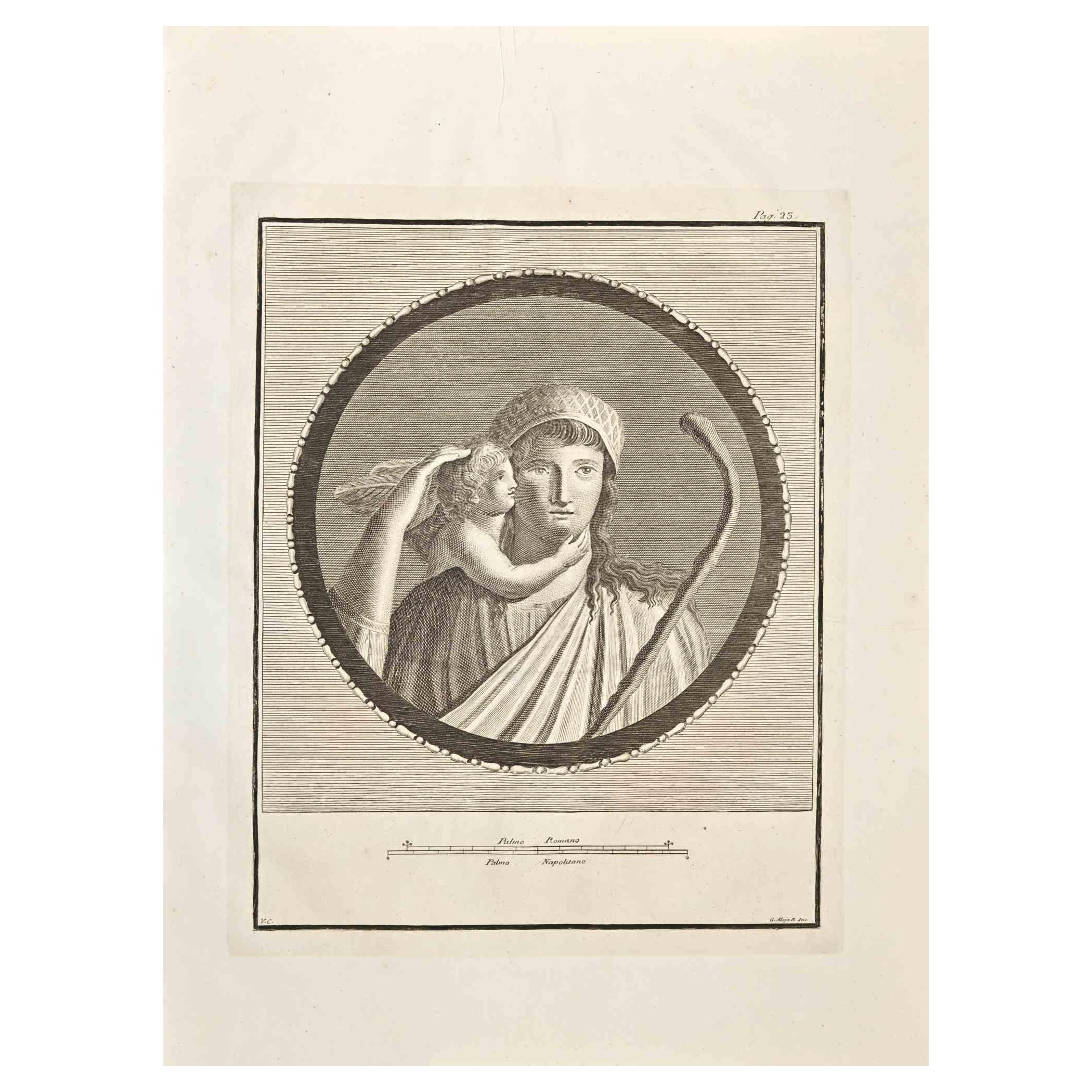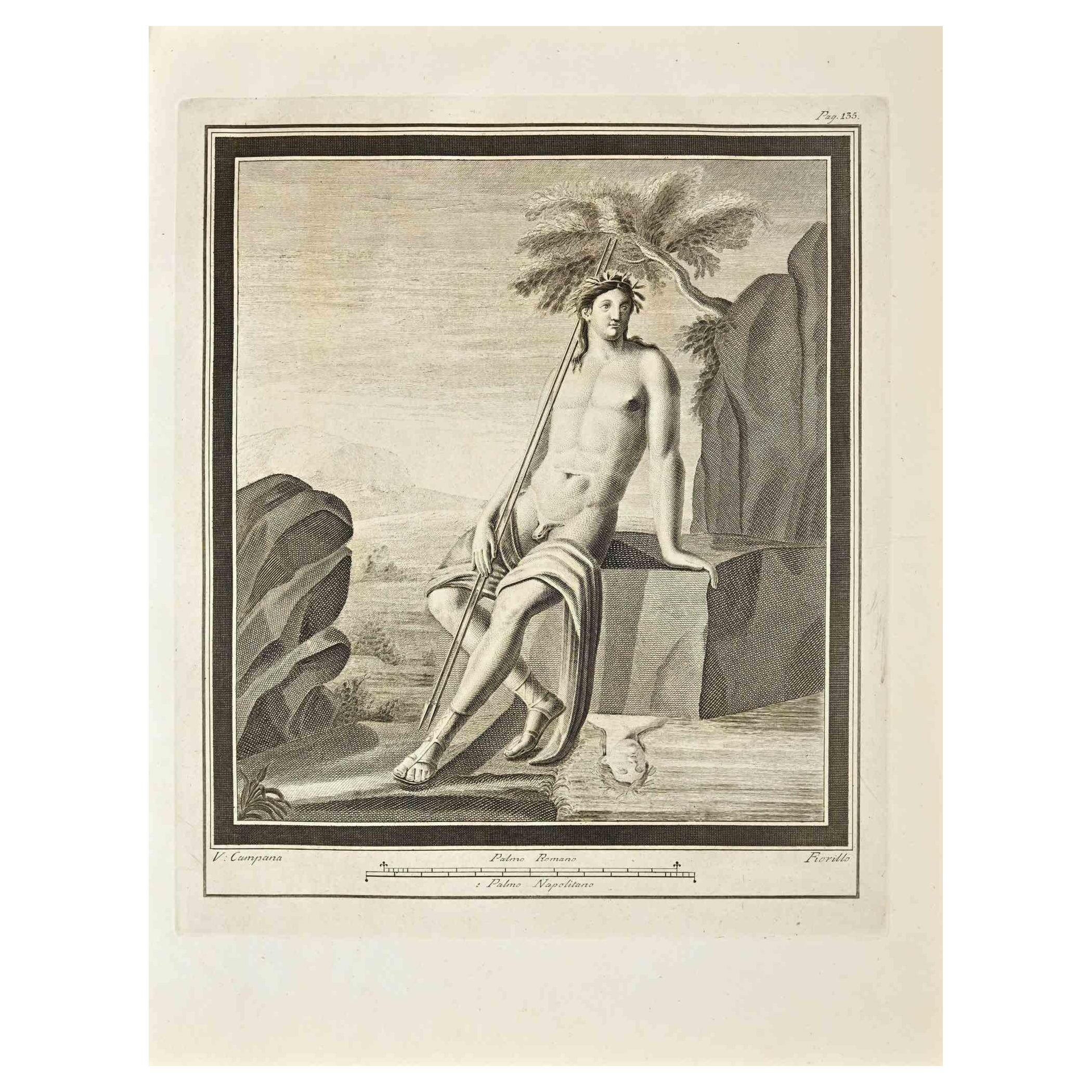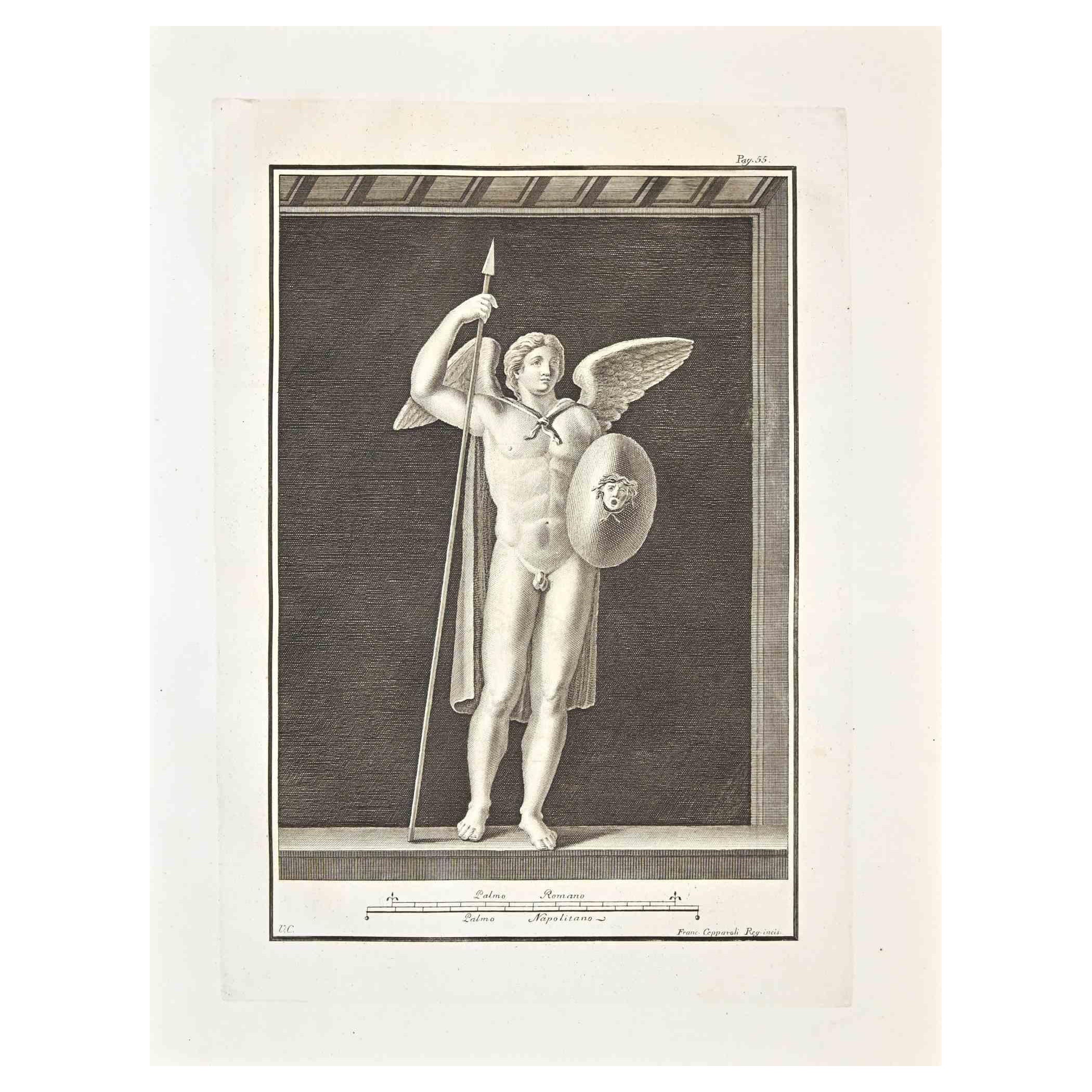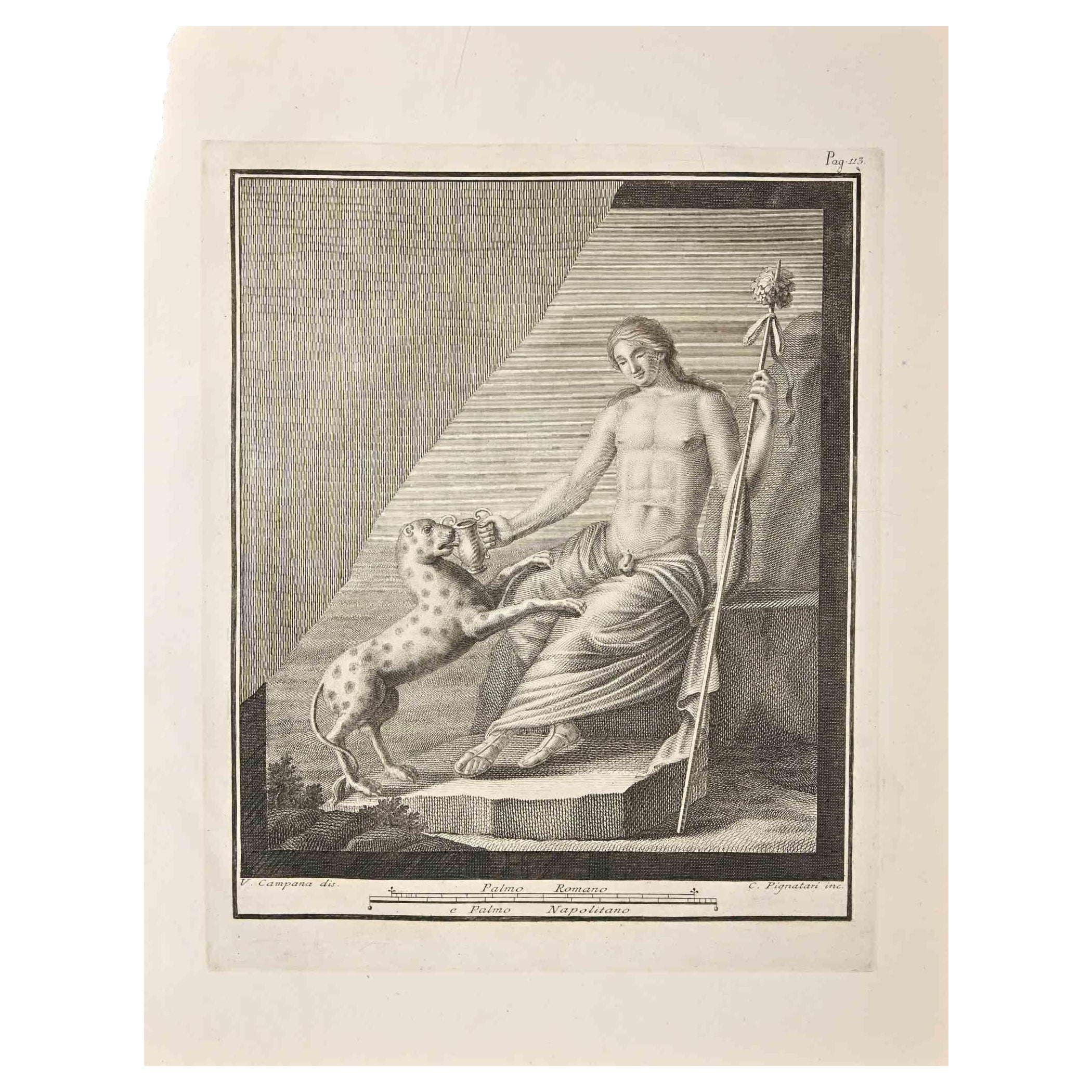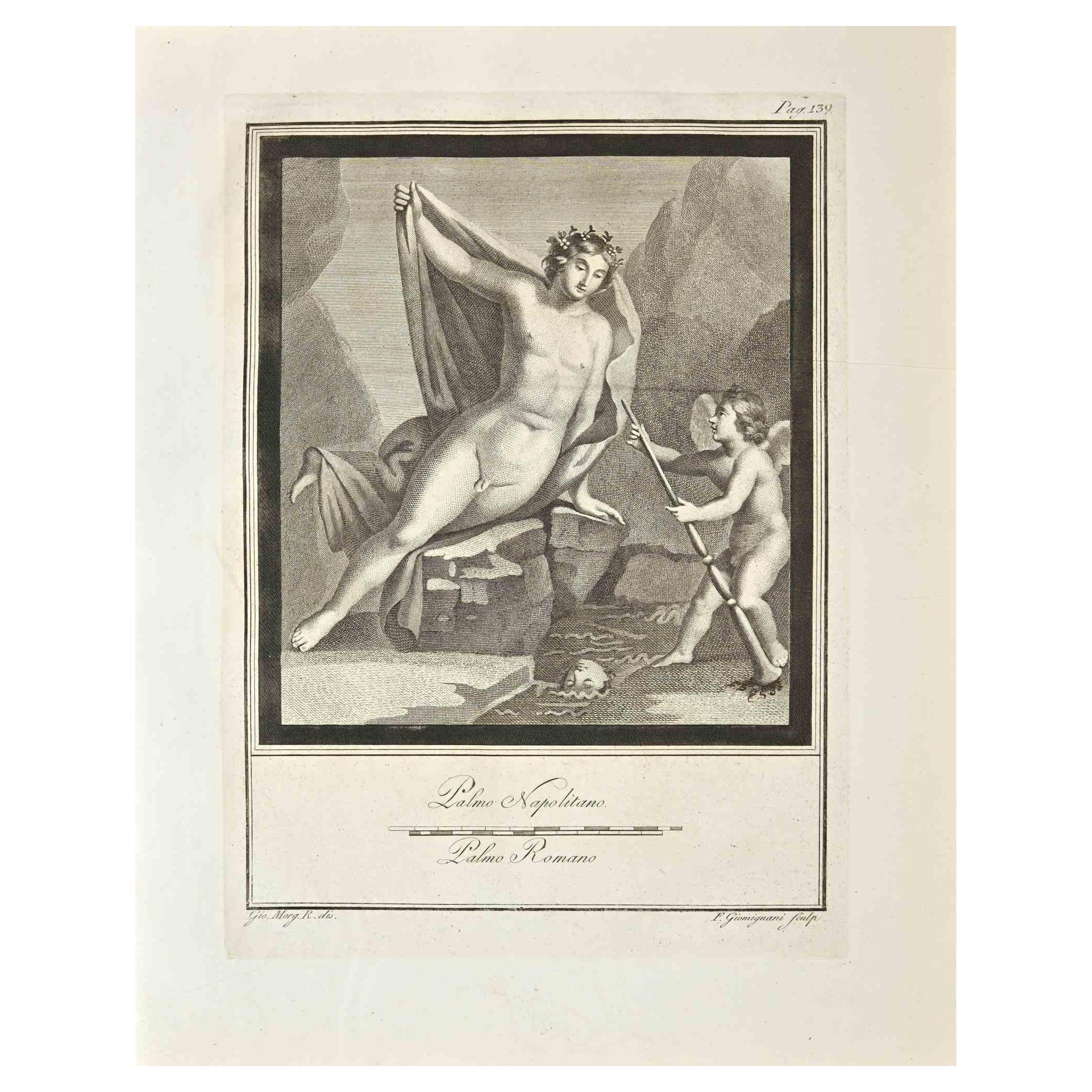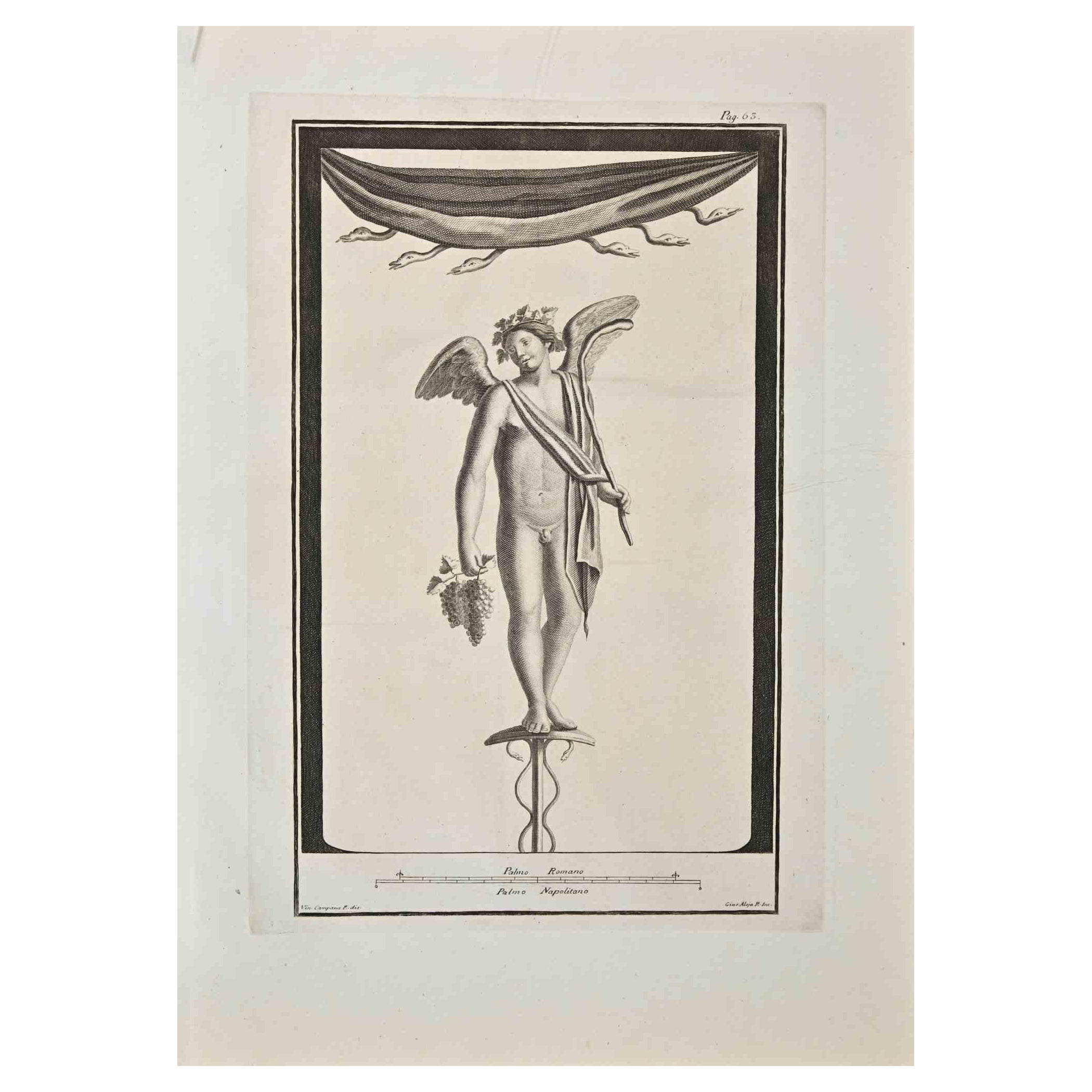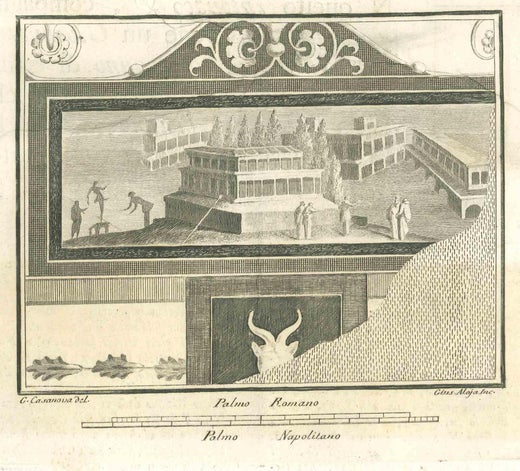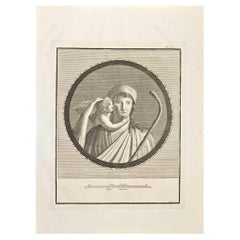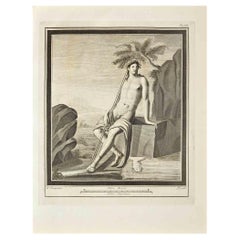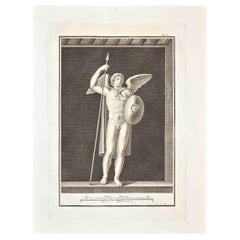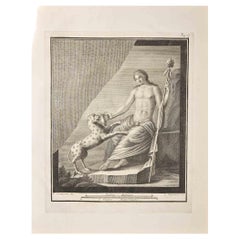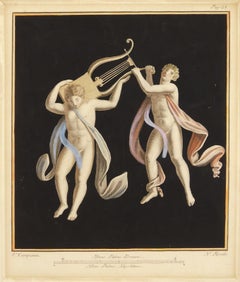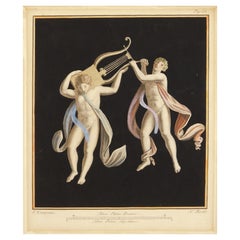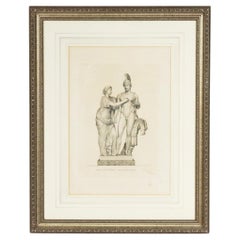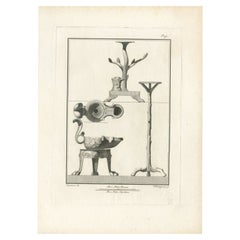Items Similar to Ancient Roman Fresco Herculaneum - Etching by G. Aloja - 18th Century
Want more images or videos?
Request additional images or videos from the seller
1 of 5
Giuseppe AlojaAncient Roman Fresco Herculaneum - Etching by G. Aloja - 18th CenturyLate 18th Century
Late 18th Century
$574.64
£429.74
€480
CA$791.83
A$863.87
CHF 457.41
MX$10,351.58
NOK 5,825.39
SEK 5,326.89
DKK 3,655.77
About the Item
Ancient Roman Fresco from the series "Antiquities of Herculaneum", is an etching on paper realized by Giuseppe Aloja in the 18th Century.
Signed on the plate.
Good conditions except for some minor stains and a cutting on the lower part.
The etching belongs to the print suite “Antiquities of Herculaneum Exposed” (original title: “Le Antichità di Ercolano Esposte”), an eight-volume volume of engravings of the finds from the excavation of the ruins of Herculaneum in the Kingdom of Naples (now Campania, Italy).
It was published between 1757 and 1792 by the Regia Stamperia, and copies were delivered to selected recipients across Europe.
Despite the title, the Antiquity of Herculaneum shows objects from all the excavations undertaken by the Bourbons in the Gulf of Naples. These include Pompeii, Stabia and two sites of Herculaneum: Resina and Portici.
The Bourbon King Carlo appointed fifteen scholars creating a new “Herculaneum Academy” to study the artifacts and publish the results of the archaeological excavations of the sites.
The engravings are of high quality and the accompanying text shows a large scholarship.
They were realized by 25 prominent artists involved by the King to prepare drawings and engravings on the finds, among which we can find Giovanni Elia Morghen, Carlo Nolli, Luigi Vanvitelli and Giovanni Battista Casanova.
The “Antiquities” was designed more to amaze readers with the quality of the objects in the collection of the King of Naples than to be used in research., following and increasing the interest of 18th century society for the classical culture and Art in particular.
Through the exaltation of the classical concept of proportions and harmony, the book was of inspiration to the neoclassical movement in Europe, giving artists and decorators access to a huge shop of Hellenistic motifs.
Ref.:
National Gallery (Washington), Mark J. Millard Architectural, IV (2000), no. 1;
L. Garcia y Garcia, Nova bibliotheca pompeiana (2 v., 1998);
Royal Institute of British Architects, British Architectural Library ... Early printed books, 1 (1994), no. 112.
U. Pannuti, 'Incisori e disegnatori della Stamperia Reale di Napoli nel secolo XVIII: la pubblicazione delle Antichità di Ercolano', in Xenia antiqua, 9 (2000), p. 151-178;
V. Trombetta, 'L'edizione de Le Antichità di Ercolano esposte' in Rendiconti dell'Accademia di Archeologia, lettere e belle arti di Napoli , 59 (1984), p.151-172.
- Creator:Giuseppe Aloja
- Creation Year:Late 18th Century
- Dimensions:Height: 18.51 in (47 cm)Width: 13.78 in (35 cm)Depth: 0.08 in (2 mm)
- Medium:
- Movement & Style:
- Period:
- Framing:Framing Options Available
- Condition:Insurance may be requested by customers as additional service, contact us for more information.
- Gallery Location:Roma, IT
- Reference Number:Seller: T-1344791stDibs: LU650311022852
undefined
About the Seller
4.9
Platinum Seller
Premium sellers with a 4.7+ rating and 24-hour response times
1stDibs seller since 2017
7,852 sales on 1stDibs
Typical response time: 1 hour
- ShippingRetrieving quote...Shipping from: Monaco, Monaco
- Return Policy
More From This Seller
View AllAncient Roman Fresco Herculaneum - Etching by G. Aloja - 18th Century
Located in Roma, IT
Ancient Roman Fresco from the series "Antiquities of Herculaneum", is an etching on paper realized by Giuseppe Aloja in the 18th Century.
Signed on the plate.
Good conditions excep...
Category
Late 18th Century Old Masters Figurative Prints
Materials
Etching
Ancient Roman Fresco Herculaneum - Etching V. Campana - 18th Century
By Vincenzo Campana
Located in Roma, IT
Ancient Roman Fresco from the series "Antiquities of Herculaneum", is an etching on paper realized by Vincenzo Campana in the 18th Century.
Signed on the plate.
Good conditio...
Category
Late 18th Century Old Masters Figurative Prints
Materials
Etching
Ancient Roman Fresco Herculaneum - Etching F. Cepparoli - 18th Century
By Francesco Cepparoli
Located in Roma, IT
Ancient Roman Statues from the series "Antiquities of Herculaneum", is an original etching on paper realized by Francesco Cepparoli in the 18th Century.
Signed on the plate.
Good c...
Category
Late 18th Century Old Masters Figurative Prints
Materials
Etching
Ancient Roman Fresco Herculaneum - Etching V. Campana - 18th Century
By Vincenzo Campana
Located in Roma, IT
Ancient Roman Fresco from Herculaneum from the series of "Antiquities of Herculaneum", is an etching on paper realized by Vincenzo Campana in the 18th Century.
Signed on the plate.
...
Category
Late 18th Century Old Masters Figurative Prints
Materials
Etching
Ancient Roman Fresco Herculaneum - Etching G. Morghen - 18th Century
By Giovanni Elia Morghen
Located in Roma, IT
Ancient Roman Fresco from the series "Antiquities of Herculaneum", is an etching on paper realized by Giovanni Morghen in the 18th Century.
Signed on the plate.
Good conditio...
Category
Late 18th Century Old Masters Figurative Prints
Materials
Etching
Ancient Roman Fresco Herculaneum - Etching V. Campana - 18th Century
By Vincenzo Campana
Located in Roma, IT
Ancient Roman Statues from the series "Antiquities of Herculaneum", is an etching on paper realized by Vincenzo Campana in the 18th Century.
Signed on the plate.
Good conditi...
Category
Late 18th Century Old Masters Figurative Prints
Materials
Etching
You May Also Like
18th Century Hand Colored Engravings of Herculaneum Frescos by Nicola Fiorillo
Located in Rochester, NY
Set ancient Roman frescos from the series "Antiquities of Herculaneum", an original etching on paper by Nicola Fiorillo in the 18th Century. Three hand colored copper engravings of classical roman. Each print is matted in a custom made silk mat that matches the clothing. Engraving with two figures measures 21.25" x 18.25". The other two prints measure 20.5" x 16.5". Size includes mat.
# greek Pompeii Grand tour
Category
18th Century Figurative Prints
Materials
Paper
Three 18th Century Colored Engravings of Herculaneum Frescos by Nicola Fiorillo
Located in Rochester, NY
Set ancient Roman frescos from the series "Antiquities of Herculaneum", an original etching on paper by Nicola Fiorillo in the 18th Century. Three hand colored copper engravings of classical roman. Each print is matted in a custom made silk mat that matches the clothing. Engraving with two figures measures 21.25" x 18.25". The other two prints measure 20.5" x 16.5". Size includes mat.
# greek Pompeii Grand tour
Category
Antique 18th Century European Prints
Materials
Silk, Paper
Italian Neo-Classic Engravings of Roman Themes
Located in Queens, NY
5 Italian (19th Cent) Neo-classic engravings depicting Roman statuary/mythological themes framed in silverleaf moulding with matting (PRICED EACH)
Category
Antique 19th Century Italian Neoclassical Paintings
Materials
Silver
Herculaneum Monuments, 1762: Bayardi's Engraving Plate 61
Located in Langweer, NL
Antique print originating from 'Le Antichita di Ercolano Esposte'. A vast survey of the bronzes, statues, wall-paintings, and monuments of Herculaneum. This monumental work was the f...
Category
Antique 18th Century Prints
Materials
Paper
Zeus (Jupiter) Engraving from Bertuch – Classical Mythology Print, 1805
Located in Langweer, NL
Zeus (Jupiter) Engraving from Bertuch’s 1805 Porte-Feuille des Enfants – Classical Mythology Print
This finely detailed engraving, published in 1805 as part of Friedrich Justin Bertuch’s Porte-Feuille des Enfants (Children's Portfolio), depicts Zeus, the king of the Greek gods (known as Jupiter in Roman mythology), in a pose that exudes authority and power. Seated on a grand throne with an eagle at his side, Zeus holds a scepter, signifying his dominion over the skies and his role as ruler of the gods.
The print is executed with exceptional precision, capturing the intricate details of Zeus’s muscular form, the folds of his drapery, and the noble posture of the eagle, a symbol of strength and divine power. Subtle hand-tinting adds depth and character to the artwork, enhancing its timeless appeal.
This piece is part of a renowned collection of early 19th-century engravings designed to introduce young readers to the rich world of mythology, art, and antiquity. Its historical and artistic significance makes it a standout addition to any collection of classical prints.
The engraving is rendered with meticulous detail, showcasing the artistry and craftsmanship of the early 19th century. The subtle hand-colored tones enhance the divine aura of Zeus, making this print a timeless addition to any collection of classical antiquities or mythological art.
- Date of Publication: 1805
- Origin: Friedrich Justin Bertuch’s *Porte-Feuille des Enfants*
- Condition: The engraving is in good condition with minor age-related foxing and light discoloration typical of early 19th-century prints. Well-preserved overall.
This print is a perfect choice for collectors, historians, or anyone with an appreciation for classical mythology and 19th-century art.
Here are some recommendations for framing and presenting this engraving to enhance its historical and artistic appeal while ensuring proper preservation:
1. Frame Style
- Material: Choose a high-quality wooden or gilded frame. Options like mahogany, walnut, or an antique gold finish complement the classical theme.
- Design: Select a simple yet elegant frame with subtle decorative details, such as beading or fluted edges, to echo the neoclassical style without overshadowing the engraving.
2. Matting
- Color: Use an acid-free mat in a neutral tone, such as ivory, off-white, or pale cream, to draw attention to the artwork and prevent contact with the glass.
- Border Size: A slightly wider mat border (around 2–4 inches) creates balance and helps focus the viewer's attention on the engraving.
- Double Matting (Optional): For a refined look, consider an inner mat in a soft complementary color like light gray or pale gold to add depth.
3. Glass
- UV-Protective Glass: Opt for museum-grade UV-filtering glass or acrylic to safeguard the engraving from light exposure while reducing glare.
- Non-Glare Option: Non-reflective glass ensures optimal viewing, especially in brightly lit areas.
4. Backboard and Mounting
- Archival Backing: Use an acid-free backing board to protect the engraving from moisture and dust while providing structural support.
- Mounting Method: Secure the engraving with archival-quality corners or hinges to avoid adhesive contact with the artwork.
5. Presentation Placement
- Display the framed engraving in a stable environment with consistent temperature and low humidity to prevent damage. Avoid direct sunlight or exposure to harsh artificial light.
- Suitable spaces include libraries, studies, or galleries where the engraving complements other classical or antique items.
6. Labeling
- Add a small engraved brass plaque or label beneath the frame with details such as "Zeus (Jupiter) – Published in 1805 by Friedrich Justin Bertuch" to highlight its provenance and historical value.
7. Alternative Display
- If not framed traditionally, consider showcasing the engraving in a display case alongside other related prints or artifacts. Use museum-grade lighting to accentuate its details without causing harm.
---
Keywords:
- Zeus engraving...
Category
Antique Early 1800s Prints
Materials
Paper
Roman Decorative Motifs and Architectural Scenes by Tommaso Piroli, 1789
Located in Langweer, NL
Roman Decorative Motifs and Architectural Scenes by Tommaso Piroli, 1789
This finely executed copperplate engraving by Tommaso Piroli (1750–1824) is part of his renowned series 'A...
Category
Antique 1780s Prints
Materials
Paper
More Ways To Browse
Picasso Linoleum Cut
Picasso Marie Therese
Picasso Paix
Picasso Pique
Portrait Of Marguerite
Renoir Originals
Richard Wentworth
Robert Indiana Numbers
Signed Chagall Lithographs
St John Collection By Marie Gray
Stained Glass Window Chartres
Toshikata Mizuno
Vintage California Flag
Vintage Peter Max Poster
Andy Warhol Electric Chair Print
Avant Arte
Basquiat The Offs First Record
Bernard Sanders
